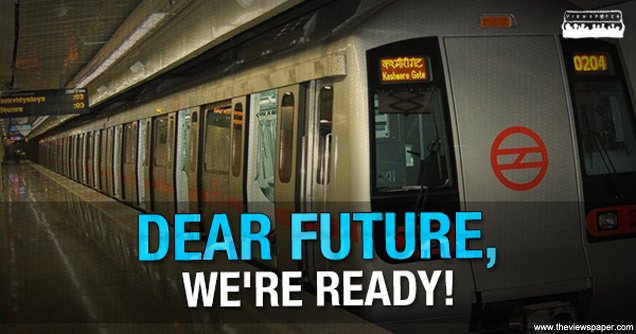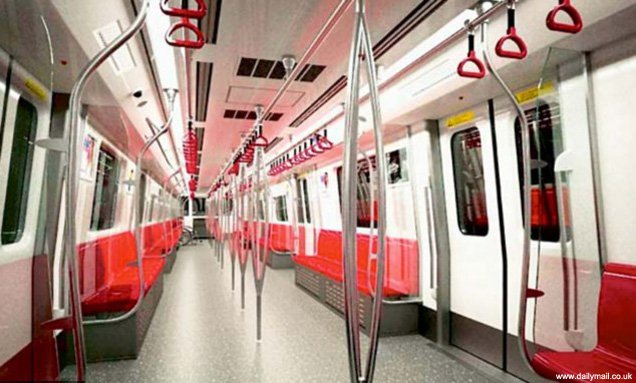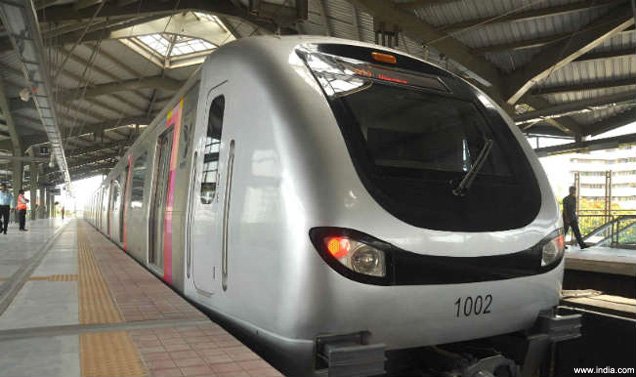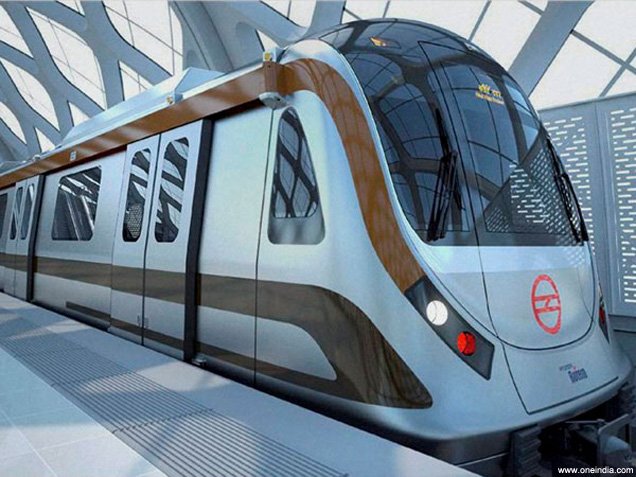No, it’s not really as bizarre a concept as you might think it to be. Technology is our future and this step is another one in that direction (pretty cool, isn’t it?!). Driverless trains have been in existence in many developed countries for some time now. The idea took flight in summer 2015 when the first driverless six coach train arrived in Delhi from South Korea. Before 2015 ended, 20 such six coach train sets were manufactured by a South Korea based company – Hyundai Rotem.

So now that we’ve caught your attention, you must be wondering what route these trains are going to follow? These trains will run on the Phase III corridors covering 58-km long Majlish Park-Shiv Vihar (Line 7) and the over the 38-km long Janakpuri (West)- Botanical Garden (Line 8). Full-fledged operations will begin by the end on this year.
Get this, keeping the environment in mind; these new trains have gone through substantial improvements to make them up-to-date and eco-friendly as well. To enhance passenger comfort, there are many additional features which have been added. Initially, drivers are going to be deputed in these one of a kind trains, just to ensure its smooth operation. But gradually, they will be withdrawn to transfer to Unattended Train Operation (UTO).

Before we tell you what’s so unique about these trains, have a slice of history while you’re at it (we promise to not bore you to death). When it comes to ‘self-driving’ passenger railways, there is one notable non-passenger railway which used unstaffed train is London’s Post Office Railway. It opened in 1927 and was developed to skip the hassle of massive traffic jams in London while transferring mail between sorting offices. In New York City, it was in 1964 that full scale trials of automatically operated trains began on the Hainault – Woodford section of the Central Line of the subway.
In 2013, Annual World Report of the Observatory of Automated Metros conducted a study and found out that there were 674km (418 miles) of automated metro in operation during that time, in 48 lines which collectively served 700 stations in 32 cities around the world. You might think that the total distance these automated trains cover is quite less, but actually, it’s a leap into the future, slowly and gradually.

Aren’t you excited to know about the unique features and upgrades in this new fleet of the Delhi metro? Of course you are! (to be honest, who wouldn’t be?).
(1) Eco friendly (need of the hour).
(2) These trains can run at a maximum speed of 95 kmph and their operational speed is 85 kmph.
(3) CCTV cameras are installed which give an inside and outside view of the train. The CCTV images can be directly accessed by the control center in driverless mode (in case you didn’t quite get how the whole thing would actually work).
(4) Dynamic route maps are provided on each door panel to let the passenger know their journey status (for the times when your mobile internet gives up on you).
(5) Even though the present metro coaches already have 230V AC charging sockets, this new fleet of metro trains will also have USB slots for charging various kinds of devices.
(6) Most importantly, the capacity of carrying passengers has increased a bit in these new trains. Each coach can accommodate a maximum of 380 passengers, which means in this 6-coach train, almost 2,280 passengers can travel (which is much more that the regular metro train).
(7) These new trains are more energy efficient than the earlier ones because of better regeneration of energy during braking. Further, there are more energy-efficient subsystems inside the coaches such as LED lighting and air conditioning systems.
(8) Every coach has four 18.5-inch LED screens which will continuously display audio-visual messages and commercials.
(9) Reinforced fiber plastic seats have been introduced to add a bit of color and brightness.

The thought of a driverless train might scare the daylights out of most people, and the fact that so many lives might even be jeopardized (we wouldn’t really blame you, given the track record of train mishaps in the country). But, these trains literally exclude human error. Depending upon the degree of automation, a further 30% of energy can be conserved in addition to the already existing energy saving features in these trains.
Give a thought to the fact that these trains can carry 50 more passengers in each coach in comparison with the normal driver driven metro trains. Besides, driverless metro trains have been existing for quite some time now in other cities around the world, without any kind of problems. We’re pretty stoked about all of this, and Delhi is too. The future is finally here.






